The Thompson Fat Pad is a replacement pad for flat utility benches and commercial benching stations. It was developed by legendary powerlifter and equipment guru, Donnie Thompson, in an effort to overhaul the simple, narrow pads typically found on benches. Essentially, Donnie wanted to create a pad that maximized power in the bench press while simultaneously reducing the risk of bench press-related injuries – and after many years of research and testing, the Fat Pad was born.
In this review I’ll be addressing the differences between the Thompson Fat Pad and standard bench pads, the claims that are made about using the Fat Pad, and even some of the Fat Pad’s idiosyncrasies. I’ll be sharing my personal thoughts on the pad, and what other people have had to say about it as well.
Thompson Fat Pad Specs
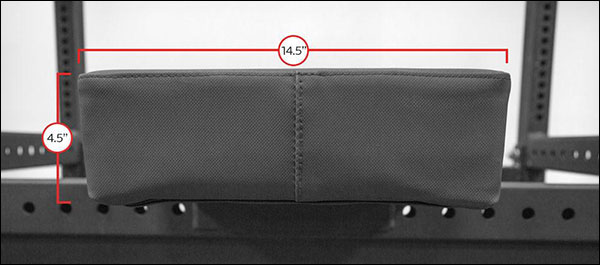
| Thompson Fat Pad | Standard Bench Pads | |
| Pad Length: | 50″ | 44-48″ |
| Pad Width: | 14½” | 10-12″ |
| Pad Thickness: | 4½” | 2-3″ |
| Cover Material: | Textured “grabber” vinyl | Standard Vinyl |
| Price: | $30-$155 | N/A |
The price for the Fat Pad is $155 when purchased as a stand-alone product (to add to an existing frame). When purchased as an upgrade option for the Monster Utility Bench, it is only a $30 up-charge. When purchased with the Westside Bench 2.0 it’s a $50 up-charge, and when purchased with the Monster Westside Bench (image below) it’s a $70 up-charge. I haven’t a clue how they come up with these numbers.
Rogue Fitness manufacturers the Fat Pad for Donnie, and as far as I know Rogue Fitness is the only retailer allowed to sell it.
Why a Thompson Fat Pad?
What’s the point of this over-sized bench pad? Well like I said in the intro, to “maximize power while minimizing injury”. Here are the stated benefits of the Thompson Fat Pad:
- Promotes scapular movement.
- Eliminates shoulder hangover.
- Optimizes back and upper body positioning.
- Increases mechanical leverages.
And here are the specific benefits of the additional thickness and width:
- Scapular movement is uninhibited and eliminates AC tears.
- Very little to NO translational loading.
- Eliminates likelihood of pec tweak.
- No more angry humeral wear on the bicep tendon and soft tissue.
Is all of this true? Seems that way. The width of the Fat Pad does eliminate shoulder hangover for everyone; even the widest of lifters – and this goes a long way in helping to prevent pec tears and rotator injuries (including the bicep long head). The extra width and density of the pad also creates a much more stable foundation to press from, especially when you factor in the grippy texture of the vinyl (image below). The’re no sliding down the bench no matter how hard you drive those feet or how slowly you inch up that last rep.
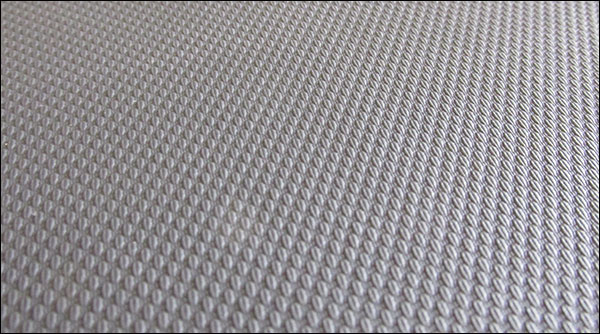
Now as far as the reference to translational loading, I cannot comment on that because I haven’t a clue what that means. Feel free to educate me in the comments though.
How does it feel? You’ll definitely feel off the first time you use a Thompson Fat Pad, and probably even continue to feel off for a number of sets. You simply cannot add between 2½” and 4½” to the width of a weight bench and not notice it – it will require a mental adjustment and more than likely a positioning adjustment. That said, I believe the majority of people will immediately decide it’s a superior feeling, and I think the bigger and stronger you are the more likely you are to instantly love it.
How about the height? Don’t forget that along with the extra width comes extra height. When mounted to the frame of the Rogue Utility Bench the top of the pad is over 20″ off the ground, and when mounted to a Monster Utility frame the pad is 19¾” off the ground. In either case, that’s a very significant and noticeable height difference, and you will probably be forced to re-position your feet for the drive. Of course the taller you are the less impact this height will have, but I promise you’ll notice no matter how tall you are.
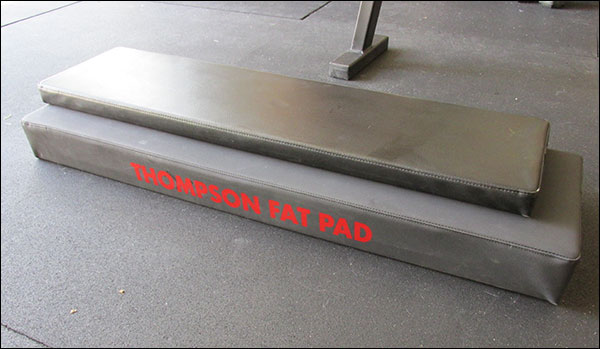
The best solution to this (if it bothers you) is to buy a shorter bench frame – something that will sit 17½” to 18″ off the ground with the Fat Pad mounted (I cover this at the end of the article for those interested.) The next best solution is free, and it involves simply placing 45-pound bumpers under each foot. It’s an extra thing to do either way, but I think that all the benefits of the Fat Pad outweigh the minor inconvenience of having to move two bumper plates from the weight tree to the floor, or extra the expense of buying a different frame.
Is the Fat Pad for beginners? Big powerlifters and naturally wide lifters obviously reap the greatest benefit from the Fat Pad. It’s wide enough for their broad frames, and the cushion can handle their above average weight (both body weight and the bar). But what about total beginners? What about naturally skinny or short lifters?
That’s a tough question, and I don’t know that I even have an answer to it. Obviously using the Fat Pad would be beneficial to people of any size or skill level at least from an injury-prevention standpoint, but is it even remotely comfortable?
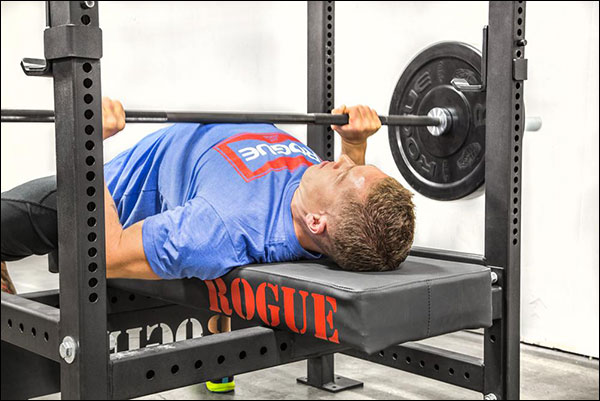
It’s probably reasonable to assume that smaller-framed or super short lifters would prefer a standard 12″ wide, 18″ high bench, but I could be wrong. With any luck we’ll get some feedback in the comments from someone of a smaller stature who owns the Fat Pad, or has at least used one more than a couple times.
What do other people think of the Fat Pad?
At the time of this writing, the Thompson Fat Pad has 12 reviews on its product page. Of those 12, all but one are perfect 5-star ratings. The one that isn’t perfect is still a 4-star rating, and the reason for that one less star is:
“…for those with long arms, such as myself, the extra few inches of thickness pushes my j-cups outside of the 1″ spacing area.”
That’s fair, right? It is, but let me just say this: For many of us long-armed folk, the J-cups are already outside the 1″ Westside spacing area. The important thing to note is that it really doesn’t matter – it’s the safeties that need to remain in the Westside spacing area, and they always will regardless of bench frame or pad. Even an incline bench set to 85º has safety settings within the Westside spacing area.
Other than that one mention of the J-cups, the only other gripe is the 20″+ height of the pad when mounted to a standard bench frame. That said, people like the Fat Pad so much that the height issue has had literally no impact on the 5-star rating. Not one person who has mentioned it gave less than 5-stars in their review.
“I benched on the Fat Pad for the first time on Christmas Day. I handled weights in the 97% of my 1 RM easily. It amazes me how much weight is left on the platform because of substandard pads. The pad alone was worth 4% to 5% more weight than I could handle on an 11.5″ wide bench. And the surface was very grippy. No sliding at all even without chalk. This is a must half for anyone serious about benching.”
Thompson Fat Pad – Review Summary
- Fat Pad eliminates shoulder hangover, optimizes body positioning, and increases mechanical leverages.
- Extra width and cushion density reduces chance of AC tears, pec tweaks, and shoulder/bicep tendon wear.
- Installs easily to any flat Rogue bench (just two bolts), and can be mounted to other non-Rogue benches as well (which may require additional drilling and/or hardware.)
- Fat Pad has virtually flawless reviews and very positive community feedback; a 5-star rating.
- The bigger you are, the more you’ll appreciate the Fat Pad. The biggest kudos come from the biggest lifters.
- The unique “Grabber” vinyl cover helps keep you in place on the bench.
- Only true drawback to the Fat Pad is the height of pad when mounted on standard bench frames, though people are clearly willing to overlook this and view it as a necessary evil.
- Price is $155 by itself, or $30-$70 to swap out the normal pad when purchasing a new Monster or Westside bench from Rogue.
- Developed by Donnie Thompson; who seems to know far better than we do how to safely optimize training.
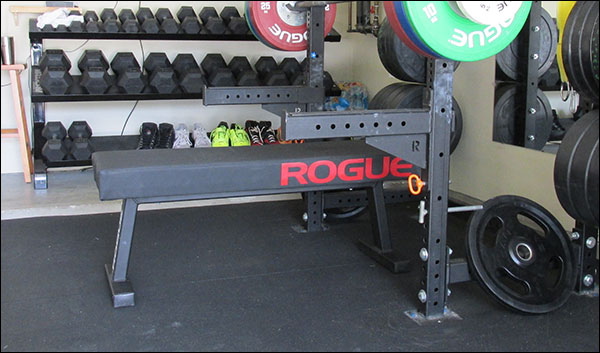
Love the Fat Pad? Hate the height? Go Custom
If you’re willing to buy the Monster Utility Bench with the Thompson Fat Pad from Rogue ($295), you can request custom sizing of of the frame prior to actually placing the order. They charge an additional $37.50 for the customization, and it does take a couple weeks to receive the bench, but it’s probably the easiest way to get an 18″ high Fat Pad bench. Unfortunately, this customization option is not available for the basic Rogue Utility Bench.
If you already own the pad and just want to buy the frame, you can do that as well. Last time I checked with Rogue the price was $140 for just the Monster frame (no pads included). So you’d pay $140 + $37.50 to chop the legs + whatever the shipping cost to you is. It’s not the cheapest thing, but it is a long-term solution – the last flat bench you’d ever buy.
It goes without saying that if you have access to the proper metalworking tools, you can cut down your bench (any bench) to whatever height you’d like. Or if you’re super savvy, you can just make your own frame from scratch.
Keep in mind that the mounting holes of the Fat Pad are positioned for Rogue’s frames. It is likely that you will need to modify the frame of a bench from another manufacturer (though this is not overly complicated, and it’s been done time and time again in training centers, CrossFit boxes, and garage gyms everywhere.)
Fat Pad Videos
Donnie Thompson’s Promo
More Donnie – Don’t Wanna Buy a Fat Pad?
Fat Pad Review Summary
Are you a serious powerlifter? Get the Thompson Fat Pad. Do you have shoulder pain or discomfort for a couple days following a chest workout? Figure out what you’re doing wrong, then get a Fat Pad! Everyone else? Get a Fat Pad!!
Okay I’m kidding. All I can say is to read those product reviews, consider your level of training and your personal goals, and then make an executive decision on whether or not the Thompson Fat Pad is right for you. Me? I’m not competitive or injured, but I love having it in my gym. Zero regrets.

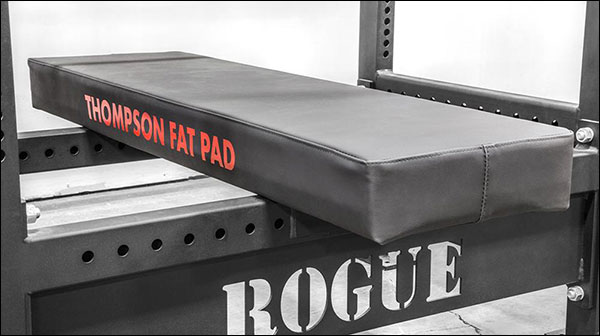
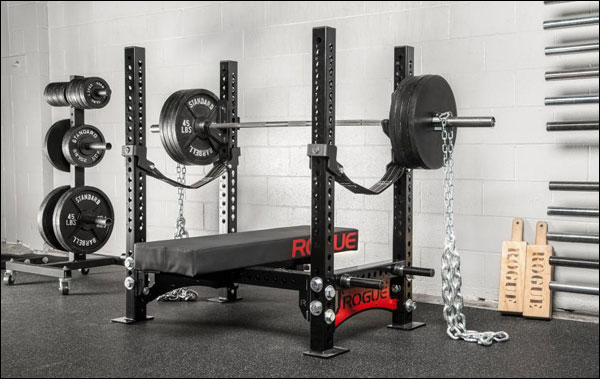
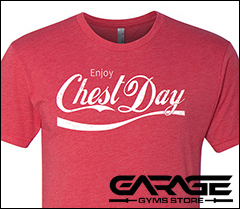
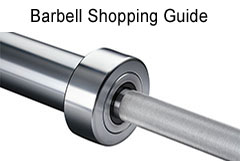
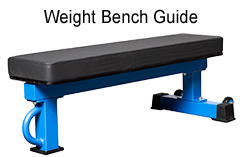
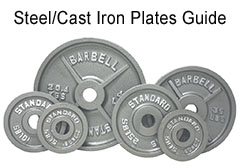
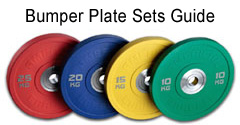
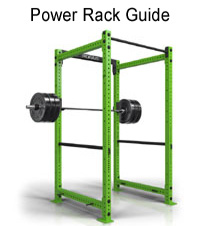
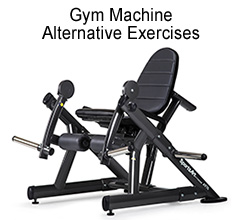

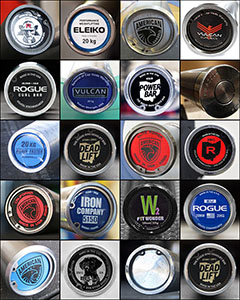

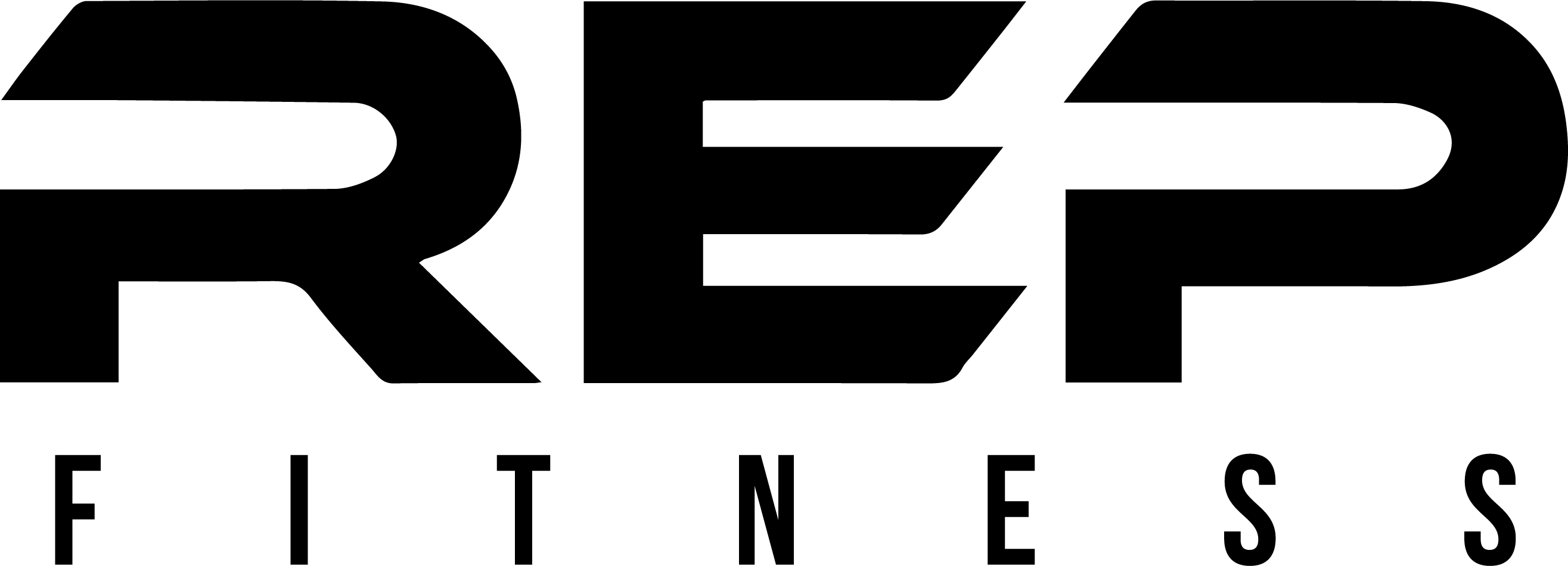
Great review as always! Will be looking into getting one.
Great review! Wish I could demo this beast. How is the transition to an incline bench? Do you think they’ll implement this pad on an adjustable bench in the near future?
I now have a custom frame for the Fat Pad that puts it the same distance from ground to top of pad as any normal bench (18″), and I love it. Switching between that and a regular 10″ wide incline bench is fine. A super wide pad doesn’t seem like it would work well for incline benching. It wouldn’t be bad for overhead work, but it would be kind of pointless. I doubt anyone will ever go beyond 12″ for incline, and that’s probably just fine. I have and always will have two benches – one for flat, one for incline.
Thanks!
A bit late to this article, but new to the site. My old gym has the fat pad and I refused to bench with anything else. I’m 6’1″, 230ish lbs, so keep that in mind. It’s the best pad I’ve benched on in 10+ years and now that I’m looking into a garage gym (moved and can’t stand globo gyms), I won’t consider any other bench.
Really enjoying the site and great reviews. Keep up the good work.
The Fat Pad is very popular among the handful of people who use my gym – even the shorter guys. I personally don’t use anything else anymore. Thanks Nathan
I purchased a monster bench w/fatpad 2 weeks ago and I absolutely love it. It is taller that a normal bench (I didn’t know about the cutdown option) and at 5’10” the height was an issue for a second. But, my wife had an aerobic step she no longer uses that fit the bill perfectly.
Solid build. When you lock into position, you are LOCKED IN.
I highly recommend the fatpad to any lifter who is serious about making strength gains but looks to avoid injury as well.
Looks like Rogue just added a couple options in March 2018. (“Now available in up to 6 custom configurations”)
There is a narrower “competition” Fat Pad that is 12.5″ in width instead of 14.5″, but with the same thickness and texture.
The Monster Utility Bench is now available in “shorty” height for no additional charge. That makes 17.5″ total with fat pad (15.25″ with standard).
Good thing I didn’t get it just yet. I was thinking to buy one with a Fat Pad and ask them to shorten the legs, your article said $37.50 but when I asked a month ago in Feb 2018 it was $49.
If you’re watching Donnie Thompson’s video, note that Donnie is 6’0″ and the huge guy Rich “Lonewolf” Williams is 6’3″. I don’t know who the smaller 190 pound lifter “Lucas” is, but he looks about 5’9″.
How they came up with the different up charge numbers is just economics. Almost anyone who gets out of their way for the Westside monster bench is a strong man with a bench shirt lifting in excess of 500 lbs… they’re going to use the Fat Pad and are willing to pay what it takes. So Rogue puts the upcharge at $70, more profit. In fact the Fat Pad is default on it, “A standard bench pad can also be substituted”. I doubt it’s really any harder to drill the holes to the size of the monster bench (if they need to drill additional holes at all).
Finally they add a short version. I hadn’t seen this yet, thank you for pointing that out.
This is definitely better than paying the I guess now $49 to basically use less material to make a bench frame. Rep came out with a great “shorty” frame for the Thompson long before Rogue did… kinda funny.
Yeah I learned literally an hour before posting that. I checked a few days prior and the option wasn’t there. However, I did find it funny that as of a few days ago- and today- one of the standard pictures for the Monster Utility Bench was literally a shorty frame.
Well, I guess Rogue was ok with milking out an extra $37-50 for the frame, since few people know about Rep. (I didn’t, until looking at benches at some blog earlier today, I think it was called something like “Garage Gyms”. Go figure.) But maybe they figured out now that by offering the shorty option they may get more- or a lot more- buyers (especially non-giant folk who want a narrower Fat Pad *and* a short frame), it’s worth doing at no additional cost so as to avoid seeming avaricious. Dollars and cents buddy, dollars and cents, it’s what runs the world.
They probably prefabbed batches of Monster bench default size, so by cutting it, they don’t so much save material as use more labor, hence the premium. They could recycle the material, sure, but I doubt they just make em one by one as they’re ordered, and just happen to most frequently pick the default size. I don’t know how the tube is made, but it looks those T-shaped supports are somehow made in one piece, and trying to custom make those every time in different lengths is just not economical. Better for Rogue to make large batches of the default size, then cut down a few as needed. I am also guessing that because they realize the demand, now they now fabricate these in two default sizes now, which makes it viable to sell.
Someone in the Fat Pad reviews describes how to cut it down, takes about 45 minutes. But if you want to do it safely and accurately, you’ll need at least a little metalworking skill and be a handyman to begin with. I believe that using the grinder to cut a square pipe so the top is level, is not a beginner-level task. If the top isn’t level, you have to drill the holes in good alignment. Rather than take hours of time and effort to do this properly, and still risk screwing it up, I’d be willing to pay someone $49 or quite a bit more. If the holes are misaligned, I will notice and regret it every single time I bench and potentially hurt myself. Thus I find DIY stuff to be best taken with some caution- you have to either accept you may do a cruddy (and maybe unsafe) job, or spend a lot of effort to learn to do it right, or pay a premium for someone to do it, who has done it dozens of times.
You’re 6’4″ and 230 lbs right? Maybe should put a description on how the bench fits for you in particular. On your shoulders, how much of a reach for your legs to get to the floor, the width between your knees, the amount of give with a heavy bench. If nothing else, the folk 6′ and taller can get a very rough approximation, it’ll be something to go off of until we have more detail from a more average-sized person.
Well for what it’s worth I don’t think they chop them down. The hole would still be there from the previous ‘standard’ size, and they’re not (and they’re not drilled out after coating so they must actually require them to cut new tubing for the shorty – back when that’s what they did anyway.) It is just 3×3″ tubing after all, so they cut the new length, drill the holes, then powder coat. It’s not anything that wouldn’t have been done anyway so it is a wonder it took so long regardless.
Those are my proportions give or take, yeah. What do you mean exactly though? I have the normal height pad so other than the extra width of the bench it doesn’t feel any different in terms of length or foot positioning, etc. I do intend to get the Rep frame when it’s back in stock, and I think I’m going to prefer the 3-legged approach more, as those gigantic legs on the Monster do require me to adjust away from them (my feet naturally want to be right at the corners of those two front rubber feet.)
That’s just it, the extra width of the bench. I was wondering if it affects your foot positioning, and whether you think it would significantly affect foot positioning of someone of average height and flexibility. I imagine there are some powerlifters who use lots of leg drive and have short enough legs that they’d want to consider using the 12.5″ width instead of 14.5″. Though next time on my regular bench I could just try sliding an inch to the right and see how my left leg fits.
In that case I guess it does seem a bit simple for something that took this long to put into play; either way I’m glad a short version is now available. I guess the price premium on a shorter frame is more about how hard it is for me to do it, rather than how easy it is for Rogue to do it.
Oh I see. Well honestly when i first got the pad and installed it to a normal frame I found that even at my height my legs weren’t long enough, and the extra width only made it worse because more of my thighs were on a pad before being able to head downwards towards the ground. With the 18″ height I don’t notice a difference anymore – I only feel the width at my shoulders/lats; which is of course wonderful for me. I do think the 14.5″ is less ideal for shorter people than the new 12.5″ pad, but I have a couple shorter friends who use the 14.5″ with literally zero complaints. Took all of one workout for them to get used to it and prefer it to the standard 10-12″ pads.
Truth be told, I’d be just as happy with 12.5″, so if in doubt go with that one I think.
Does that help any?
It does, thanks for the info, that does give me a little sense of scale. I was wondering also about the width on the shoulders… how do those shorter friends handle the 18″ height leg-wise, and about how narrow of shoulders might you get before the 14.5″ starts becoming too wide? (e.g. an average-shouldered 5’9″ man or a broad-shouldered 5’5″ man) The only comparison I’ve got is the guy in the video, looks like he is a fairly broad-shouldered 5’10”.
That’s a good question. These shorter guys are still kind of broad which isn’t helpful for answering that.
The thing is though that the shoulder part probably doesn’t matter for anyone who’s not a 4½’ tall kid, or maybe a 5′ tall woman. No one is so narrow that 14.5″ would prohibit them from lowering the bar to their chest. At least, I wouldn’t think that would be a problem for 99% of adults. The width is after all for stabilizing the shoulders – not letting them completely hang off the edge of the bench. So really I can see the leg drive issue being a bigger issue for super short people than the bench being too wide for their shoulders.
I guess I would base the decision to go 12.5 versus 14.5 completely on ones own self analysis of their broadness. Skinny and short? Go 12.5. Broad at nearly any height? Go 14.5. The fact that a 5’3″ Asian man that weighs 160 pounds likes the 14.5 over a 12″ bench should be reassuring. Also a 5’7 not overly broad dude who likes it as well. I think you’d have to be pretty small in general to actually have issue with the width, but again 12.5″ is pretty solid too so I’d defer to that if in doubt.
Also I’ve gone back and forth about buying the 12.5 just because.. it’s just too damn expensive to buy alone after having done that with the 14.5 AND the custom Monster frame, or I probably would own it. Who knows – maybe I’d like it more myself. Just.. so much money on pads and frames lol
Ah alright, I’m definitely “broader” than those examples so I’m likely safe with 14.5″. Does make sense that anyone who’s basically larger than a tiny adult should be able to bench comfortably. I guess it’s a thin frame under 5′ tall where the bench starts to be like a table. Anyways, thanks for the insight, maybe others will find this useful too.
Ya I think at like 4’10”, 90 pounds it’s like floor pressing in an elevated position